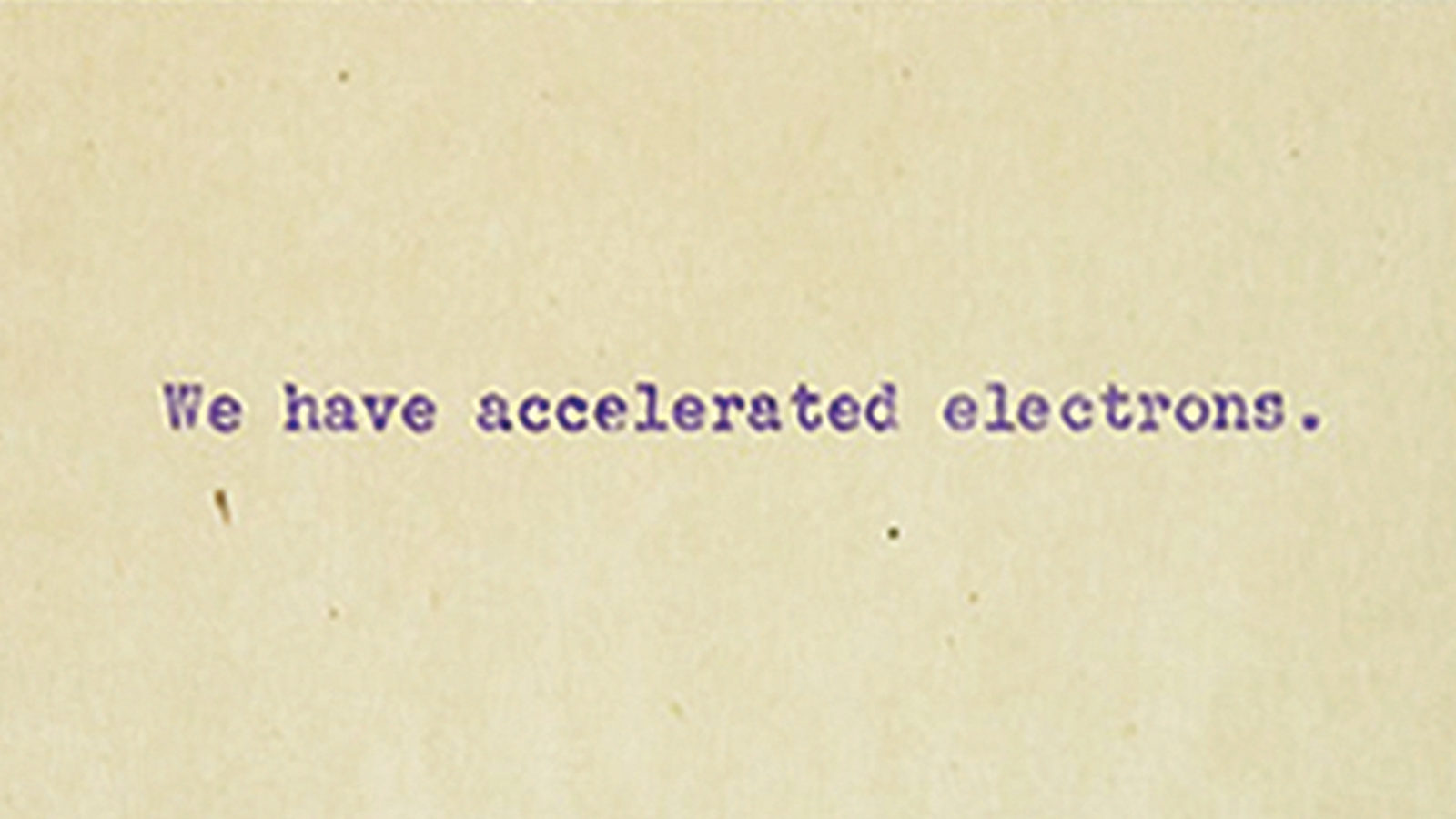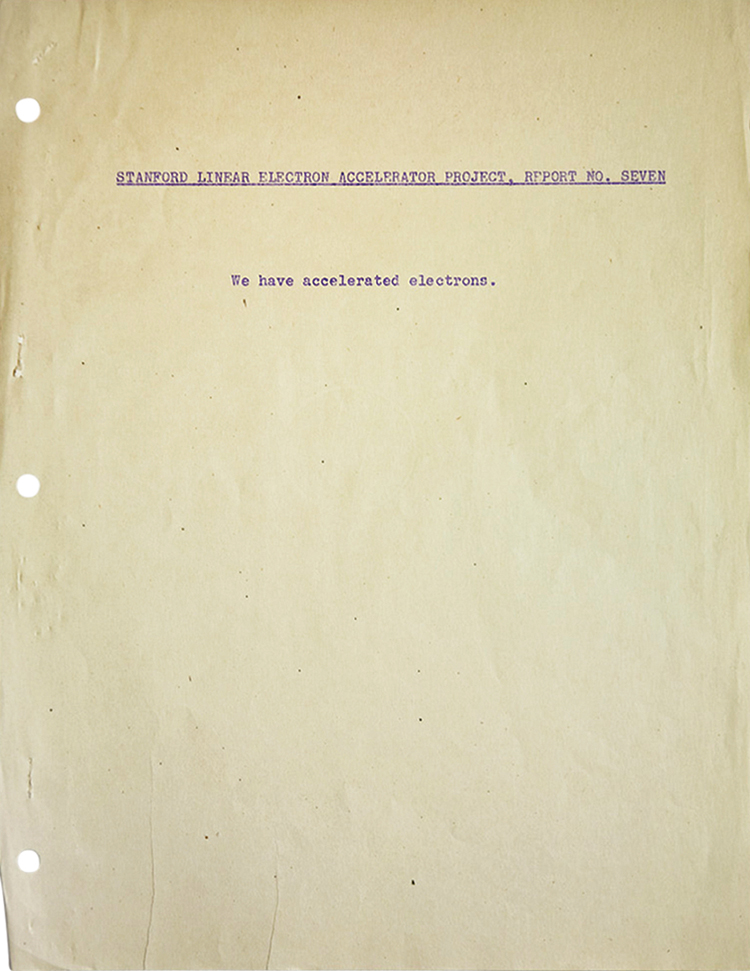William W. Hansen first imagined accelerating electrons using microwave power while teaching at Stanford University in the mid-1930s. In 1937, he played a key role in inventing the klystron tube, which generates microwave power for accelerating particles in a linear series of metal cavities.
Hansen and his team dedicated seven years of research during World War II to the Allied war effort, propelling the advancement of Doppler radar. Finally, just 18 months after Hansen returned to lead a new microwave lab at Stanford, zoom! Electrons streamed through his foot-long linear accelerator, reaching energies of six million electronvolts. Four words proclaimed this achievement to the project sponsors at the Office of Naval Research. Although a British team beat Hansen’s group by a few months, the Stanford design was the one that stuck, eventually becoming the model for the two-mile-long linac at what is now SLAC National Accelerator Laboratory.








